Cloud Service Models: Choosing the Right Fit for Your Business Needs
Software Solutions as a Service
Software Solutions as a Service, commonly known as SaaS, is a service model where applications are hosted in the cloud and made accessible to users over the internet. Users typically interact with these applications via a web browser or mobile application.
The key advantage of SaaS is that it shifts the responsibility for software management, including updates and maintenance, to a third-party provider. This translates into cost savings and reduced complexity for users.
- Accessibility: Uses the internet for application access.
- Maintenance: Handled by the service provider.
- Cost: Generally lower than traditional software; usually subscription-based.
- Scalability: Offers various tiers to suit businesses of all sizes.
- Security and Compliance: Included within the subscription fee.
Examples of SaaS include tools for customer relationship management, office productivity, project coordination, messaging, and online meeting software.
Development Platforms as a Service
Development Platforms as a Service or PaaS, caters to developers by offering an environment that simplifies the coding process.
This cloud service model provides tools that assist in the creation, testing, and deployment of applications swiftly and efficiently.
The PaaS provider manages the infrastructure, such as servers and network systems, enabling developers to concentrate on their code without concern for the underlying platform.
- Focus: Application creation and deployment.
- Resources: A wealth of integrated tools and services.
- Flexibility: Allows for altering resource allocation as necessary.
- Foundation: Grounded in virtualization technology.
Using PaaS, companies can both host their developed software and support other applications critical for their operations.
Fundamental Cloud Infrastructure as a Service
Lastly, there's Fundamental Cloud Infrastructure as a Service or IaaS.
This model is the most versatile, providing on-demand access to computing resources such as servers, storage, and networking facilities.
IaaS rids businesses of the need to invest in physical hardware and the associated maintenance tasks.
- Flexibility and Scalability: Offers significant adaptability for various software needs.
- Cost-Effectiveness: Eliminates capital expenditure on physical equipment.
- Control: Gives more autonomy over your computing environment.
It's useful for storing data, hosting applications, and software development. However, it does demand a level of technical expertise for setting up and managing the digital infrastructure and ensuring data and application security.
Choosing the right cloud service model is essential and should reflect your operational needs and technical capabilities. Each service offers distinctive advantages but also requires consideration of your team's skills and the level of control you desire over the cloud resources.
Overview of Cloud Service Models and Comparative Analysis
Cloud computing offers various service models, each catering to different aspects of IT needs. The three primary models are:
- Software as a Service (SaaS): End-users access applications over the internet, which are managed by the service provider.
- Platform as a Service (PaaS): Offers a development platform for applications. Users manage applications and services they develop, and the underlying infrastructure is handled by the provider.
- Infrastructure as a Service (IaaS): Provides virtualized computing resources over the internet, with users having the most management control over the infrastructure.
Comparing these models involves examining the trade-off between control and convenience. SaaS offers the least control but the most convenience, PaaS sits in the middle, and IaaS offers the highest control but requires the most user management.
Variations in Cloud Service Pricing Models
When evaluating the costs of cloud services, consider the following:
- Pay-as-you-go: Charges based on actual usage, suitable for fluctuating workloads.
- Subscription-based: A fixed fee for a certain period regardless of usage, fitting for predictable workloads.
- Tiered pricing: Offers different levels of service with associated costs, allowing for scalability.
Each service model (SaaS, PaaS, IaaS) has unique pricing structures. It is critical to evaluate how each model aligns with your financial capabilities and business objectives.
Cloud Model Emphasizing on Application and Data Management
Under the Platform as a Service (PaaS) model, clients are accountable for the management of their applications and data while the service provider manages the underlying infrastructure. PaaS delivers a framework for developers to build upon, facilitating easier app deployment without the complexity of maintaining the infrastructure.
Key Considerations for Cloud Model Selection
Businesses contemplating cloud services should assess:
- Technical Expertise: The level of in-house IT skills.
- Cost Structure: Determining operating expenditure vs capital expenditure.
- Business Scalability: The need to scale services up or down.
- Control: How much control is required over the environment?
- Compliance: Ensuring the service complies with relevant regulations and standards.
Choosing the appropriate cloud model depends on a balance of these factors and business priorities.
Cloud Computing SaaS Model and Its Applications
The Software as a Service (SaaS) model works by hosting software on centralized cloud servers. Users access these applications through web browsers, often on a subscription basis. Typical use cases for SaaS include email services, customer relationship management (CRM) systems, and collaborative office applications.
Pros and Cons of IaaS, PaaS, and SaaS
IaaS - Maximum flexibility and control over resources.
- Scalable. - Requires more management.
- Can have higher complexity.
PaaS - Eases application development.
- Reduces the need for infrastructure management.
- Less control than IaaS.
- Dependent on the provider's platform.
SaaS - Minimal management requirement.
- Quick setup and deployment.
- Least control over environment.
- Potential for vendor lock-in.
Each of these three service models in cloud computing offer a varying balance of control, management, and ease of use.
Understanding these dynamics is crucial for adopting the model that best suits a business's specific needs for each specific task.
The cloud experts here at Orillia Computer can help you choose the right mix of cloud services for your business, as well as providing all necessary development, deployment and ongoing support needs!
Building better solutions for better business®




